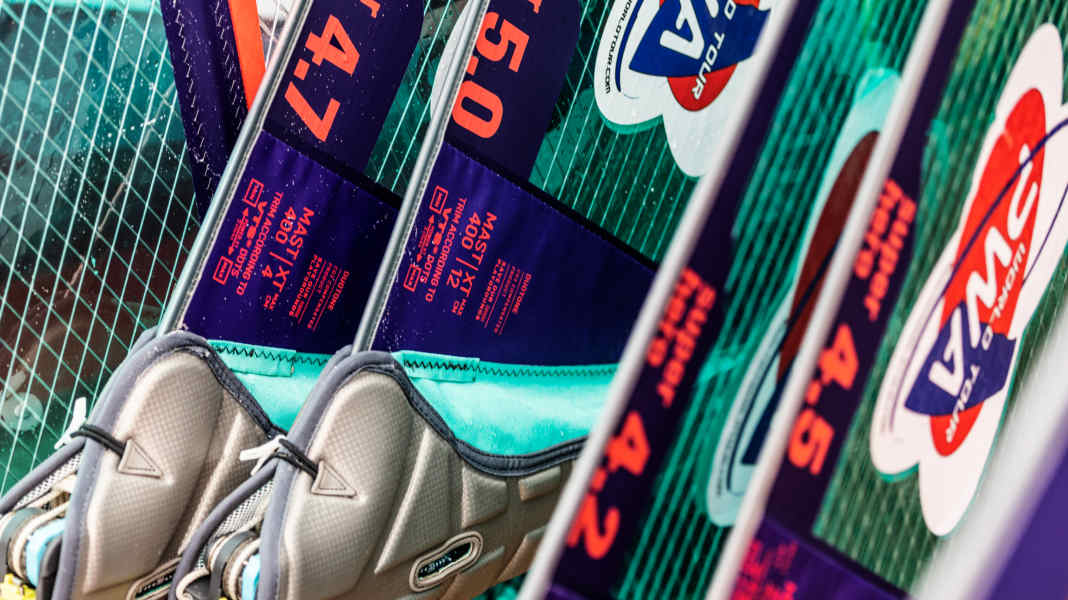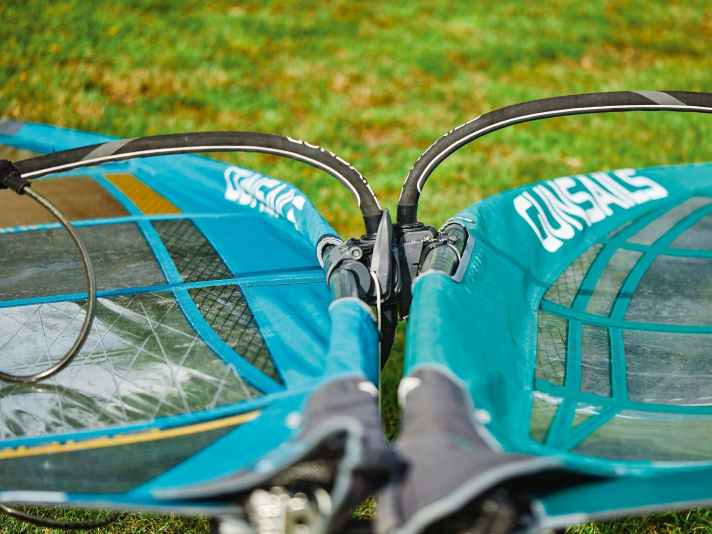
"So, what are you riding?" This question is asked at every surf spot, on every surf day. What is meant, of course, is what size sail you should choose. Sometimes this initial question leads to a detailed dialogue about conditions, forecasts, personal preferences, weight problems, material properties, imminent purchase intentions and riding technique. Sometimes, however, only a number is mumbled ("five-three"), while the very shy leave it at an investigative look at the rig lying on the beach - often followed by a furtive check of the other person's stature.
How big the sail should be for windsurfing depends on many factors. The most important are wind strength and the weight of the surfer. In the same conditions, a person weighing 60 kilograms will use a smaller sail than a 90-kilo hunk. At 15 knots, however, the same person would need a different sail than at 25 knots.
Rule of thumb: Which sail for which wind?
The question of the right sail size is particularly exciting for beginners to windsurfing and intermediates who have just learnt the basics at surf school. As an all-round size for light and medium winds (2-4 Beaufort) and surfers who have just learnt the basic techniques (starting, running upwind, tacking, jibing), the following sail sizes (in m2) are recommended depending on body weight:
- < 60 kg: 4.0 to 4.2
- 60-75 kg: 4.2 to 5.3
- 75-90 kg: 5.0 to 6.2
- >90 kg: 5.5 to 6.5
Advanced windsurfers are often better able to judge which sail is right for them based on their experience. In addition to the wind strength and weight factors mentioned above, the type and size of the board, conditions (waves, currents, gusts), riding technique and personal preferences also play a role in the decision. While some people want to sail as small as possible, others prefer a rig that is still manageable.
Further guides for windsurfing beginners:
The ideal sail for windsurfing beginners
If you're looking for your first windsurfing sail, you should look in particular at the wave, freemove and freeride ranges. These sails are generally lightweight, have good control and are easy to set up. While wave sails focus on manoeuvrability, freeride sails are somewhat more planing and stable. First of all, stay away from freerace or race sails with camber (plastic clips on the mast) - these are only of interest to advanced sailors and make it much more difficult to catch up, launch and manoeuvre!

The size of a windsurfing sail is given in square metres. While wave and freestyle sails are mainly found in sizes between four and six square metres, freeride sails cover a range of up to over seven square metres. Some sail lines go down to around three to 3.5 square metres for particularly strong winds, while children's sails are even smaller. In the eight to nine square metre range, you will find mainly race-oriented sails. Most manufacturers scale their sail lines down in steps of 0.2 to 0.5 square metres. The difference between a 4.5 and a 4.7 metre sail, for example, is marginal and negligible for intermediates.
How many sails do you need for windsurfing?
You can't use more than one sail anyway - at least not at the same time. Nevertheless, it makes sense to think about expanding the range of sails after the first few glides at the latest. Based on the first sail you have, you quickly realise: Would I like to go out on the water in less wind, do I have a good grip on my sail so far and still have power reserves? Then you can look around for a model that is about one square metre larger. However, if you realise that there is often too much wind for the existing sail and you want easier handling, a smaller sail is a good purchase. It makes sense to ensure that the mast and boom can be used on both sails at best.
Many windsurfers expand their sail range as their riding ability increases and gradually reduce the gaps between the individual sizes. This always depends on the area, the boards and how many people are using the equipment. If dad is out on the water in lighter winds with the 7.3, for example, the children can use his 4.5 strong wind sail.
Examples of conceivable sail pallets would be
- 4.2 - 4.7 - 5.3 - 5.8 for wave-orientated surfers with an all-round waveboard
- 5.3 - 6.0 - 6.7 - 7.5 for freeriders on flat water
The gradations can become larger with larger sails over 6.5 square metres, and with the right trim such sails can often be ridden well for a long time even in increasing winds.

